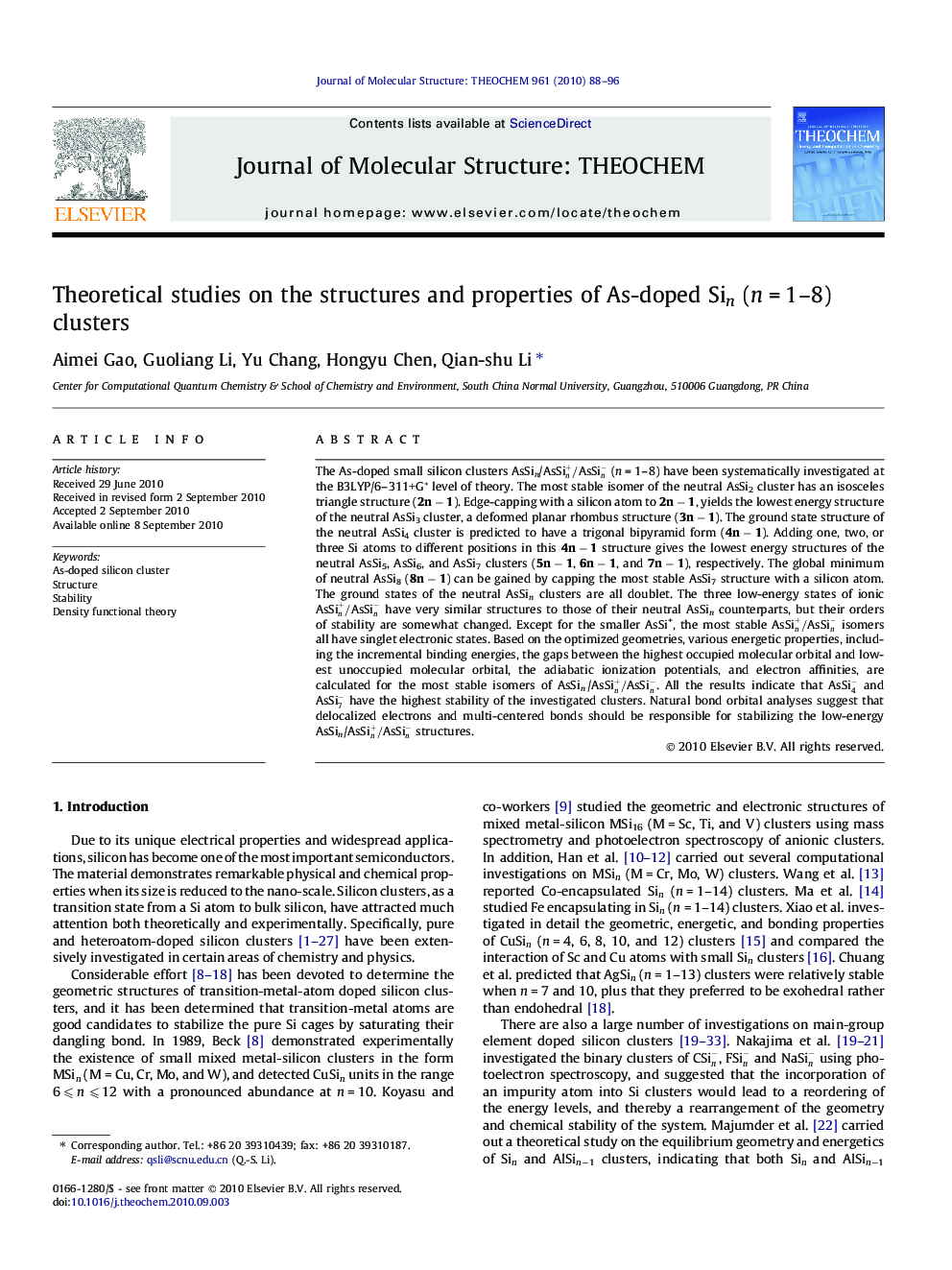| Article ID | Journal | Published Year | Pages | File Type |
|---|---|---|---|---|
| 5416292 | Journal of Molecular Structure: THEOCHEM | 2010 | 9 Pages |
Abstract
The As-doped small silicon clusters AsSin/AsSin+/AsSin- (n = 1-8) have been systematically investigated at the B3LYP/6-311+G* level of theory. The most stable isomer of the neutral AsSi2 cluster has an isosceles triangle structure (2n â 1). Edge-capping with a silicon atom to 2n â 1, yields the lowest energy structure of the neutral AsSi3 cluster, a deformed planar rhombus structure (3n â 1). The ground state structure of the neutral AsSi4 cluster is predicted to have a trigonal bipyramid form (4n â 1). Adding one, two, or three Si atoms to different positions in this 4n â 1 structure gives the lowest energy structures of the neutral AsSi5, AsSi6, and AsSi7 clusters (5n â 1, 6n â 1, and 7n â 1), respectively. The global minimum of neutral AsSi8 (8n â 1) can be gained by capping the most stable AsSi7 structure with a silicon atom. The ground states of the neutral AsSin clusters are all doublet. The three low-energy states of ionic AsSin+/AsSin- have very similar structures to those of their neutral AsSin counterparts, but their orders of stability are somewhat changed. Except for the smaller AsSi+, the most stable AsSin+/AsSin- isomers all have singlet electronic states. Based on the optimized geometries, various energetic properties, including the incremental binding energies, the gaps between the highest occupied molecular orbital and lowest unoccupied molecular orbital, the adiabatic ionization potentials, and electron affinities, are calculated for the most stable isomers of AsSin/AsSin+/AsSin-. All the results indicate that AsSi4- and AsSi7- have the highest stability of the investigated clusters. Natural bond orbital analyses suggest that delocalized electrons and multi-centered bonds should be responsible for stabilizing the low-energy AsSin/AsSin+/AsSin- structures.
Related Topics
Physical Sciences and Engineering
Chemistry
Physical and Theoretical Chemistry
Authors
Aimei Gao, Guoliang Li, Yu Chang, Hongyu Chen, Qian-shu Li,
